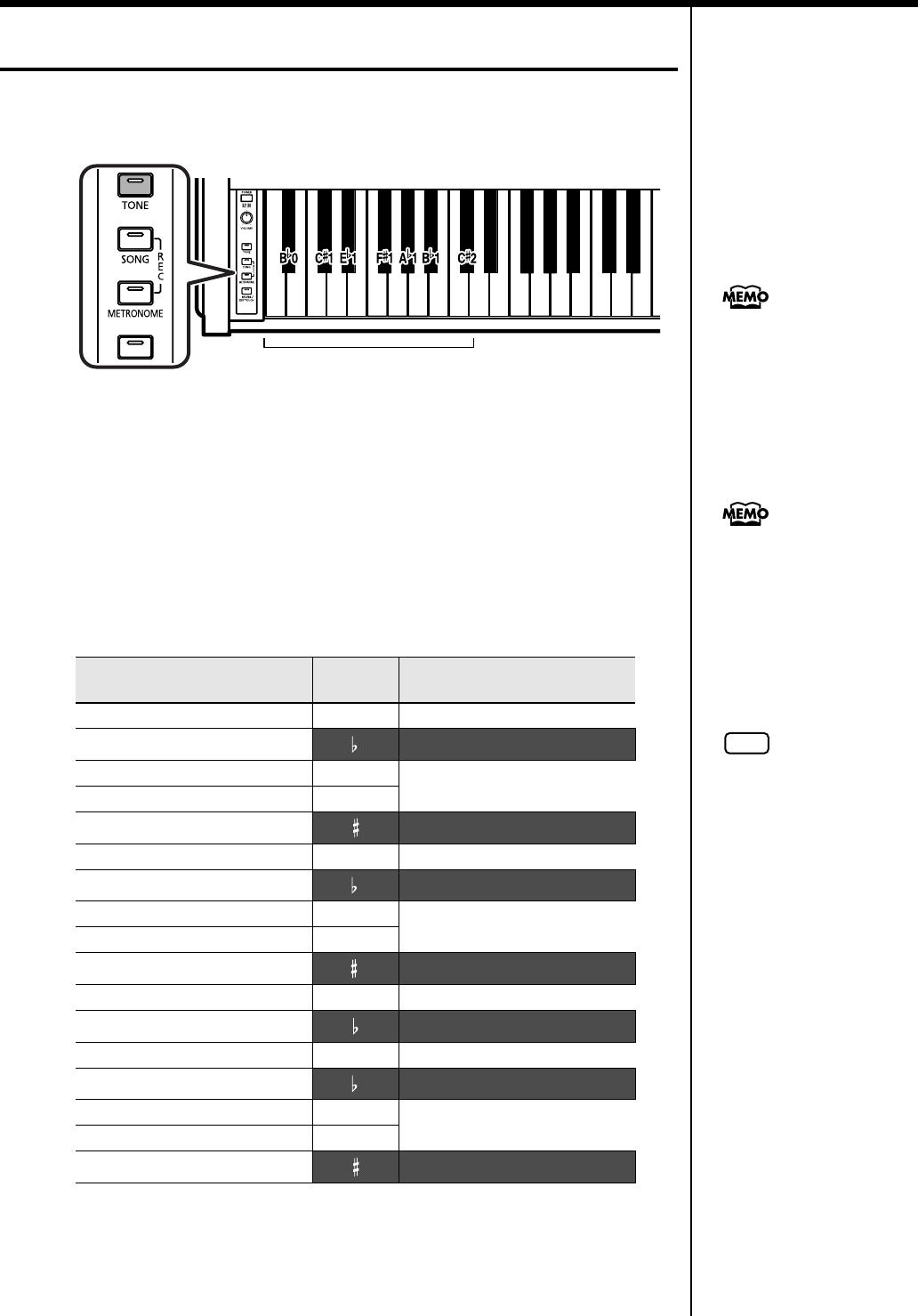
18
Performance
Playing Two Sounds Together (Dual Play)
Simultaneously playing two tones when one key is pressed is called “Dual play.”
fig.panel2-5
1.
Press the [TONE] button.
The button’s indicator will blink.
2.
Simultaneously press a white key and black key to which tones are
assigned.
The [TONE] button’s indicator will change from blinking to lit.
The black keys are assigned to sounds that are suitable for layering with the sounds
assigned to white keys.
3.
To cancel Dual play, press the [TONE] button and then press a key to
which a sound is assigned.
Tone
Key
Pressed
Tone
Grand Piano
A0
B0
Slow Strings
Mellow Piano B0
Honky-tonk C1
C1
Strings
Harpsichord D1
E1
Choir
Coupled Harpsichord E1
Electric Piano1 F1
F1
Church Organ 1
Electric Piano2 G1
A1
Church Organ 2
Vibraphone A1
B1
Organ Flute
Piano + Strings B1
Piano + Choir C2
C2
Rotary Organ
A0 B0 C1 D1 E1 F1 G1 A1 B1 C2
2
1
You can also switch sounds by
holding down the [TONE]
button and simultaneously
pressing two keys to which
sounds are assigned.
You can also use Dual Play by
combining tones that are
assigned to two white keys or
two black keys.
NOTE
The sounds assigned to the B1
and C2 keys are actually
combinations of two sounds.
The sounds assigned to these
keys can’t be combined with
the sounds of other keys.
RP101_e.book 18ページ 2007年4月4日 水曜日 午前11時50分


















